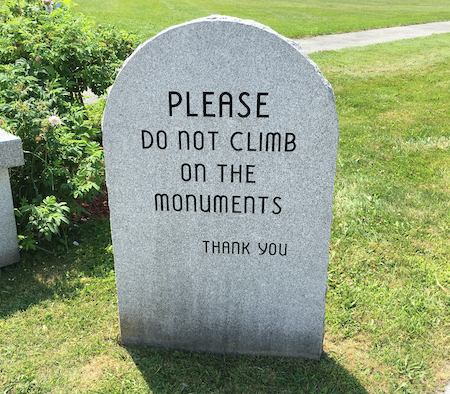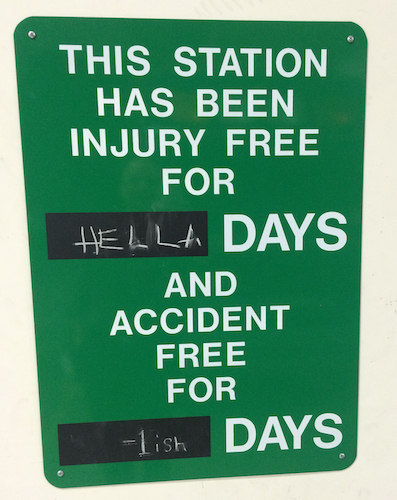Resilience planning is the difference between crisis mode and panic mode
I know people who say they’re always in “crisis mode,” but really they’re just panicking from one poorly planned problem to another. Churning in fix-it mode makes them feel relevant and needed.
It’s like a constant game of whac-a-mole, but for life. They wear their indispensability like a medal of honor.
That’s not the crisis mode I’m talking about today.
If you’re a human, at some point you’re going to face a real crisis. Something that throws your reality into chaos. Something that disrupts all your life plans. Something that you definitely don’t want to plan for.
Being laid off. Losing your grant funding. A loved one falling sick. A divorce. A pandemic.
Who wants to think about being laid off in a tough market, even when you know the company is in decline? Who wants to think about going through divorce even though things haven’t been great for a while? Who wants to imagine their top funder backing out because priorities changed?
No one. You can’t allow yourself to get lost in endless worry over terrible things that may never happen. And you can’t ignore preparing for terrible things that might happen.

Preparing to be unprepared
It’s impossible to plan for every possible thing that could go wrong.
For sure, you absolutely should plan for things that can be planned for. Have a disaster kit in your home and workplace. Get your advance directive and estate plan in order. Build up savings in case you lose your job.
Then work on your resiliency mindset. Prepare yourself for being unprepared.
You can’t create an action plan for every possible situation, but you can decide on your core guiding principles that will help you feel more in control when the next crisis hits.
This is true for both individuals and organizations. Whether you’re planning for yourself and your family, or you’re a business leader looking out for your team and your business, start with these two steps:
1. Imagine the future on the other side of the crisis
Imagining how your world will look after a major crisis is a scary and difficult thing. It’s easy to get lost in all the disruption and damage the crisis may cause. It’s possible to get overwhelmed by a sense of loss, so if you start to feel something like that, you may consider working with a licensed therapist or counselor.
If you’re able to visualize that future, though, you can take away some of the power it has over you. I know several people who need to imagine the worst-case scenario because if they can imagine surviving that, then all other potential outcomes become less scary.
I am not that type of person. I hate worst-case planning, even though I can see its value in overcoming the paralysis that fear can cause. I am naturally a positive person, so I tend to start from a less fearful place. (Which gives me a different set of hurdles to overcome, but that’s not today’s blog post.)

In any case, once you get past that fear, if you can imagine a future on the other side of the crisis, you can begin to plan to make that future as good as possible.
You can start to control how you will move through a crisis rather than react to it in a disoriented state of panic.
2. Articulate what’s truly important to you
In the previous step I say “make that future as good as possible.”
In order to do that, you need to decide how you define “good.”
Perhaps the biggest resiliency mind-shift is when you turn your attention from what the crisis will take away, to all the things you will need in order to build anew on the other side of it.
For example, I’m thinking of two different middle-aged men who recently got laid off. One (not my client) went into panicked crisis mode and took the first job that came up even though he had plenty of savings and this new job involved major sacrifices on the part of his family. He reacted to his biggest, most present fear because he couldn’t see past it.
The other (my client) went into creative crisis mode, and even though he doesn’t have unlimited savings, he’s now excited to be ideating a new line of work with a former colleague. He was able to look beyond the biggest, most present fear to see the bigger picture beyond it.
While those are examples of different crisis response mindset, the same is true for crisis preparation mindset. If you know what’s truly important to you, you can put yourself in better position to avoid making potentially bad decisions out of panic.
You can move through crisis intentionally and in control, rather than responding from a place of fear and disorientation.
An example: The daughter who suddenly became a caregiver
This example is a real friend I have been informally coaching through her crisis. I’ve changed some details, but I have her permission to talk about this here.
Ruth is 55 years old. Her mother, Claire, is 85 and lives 500 miles away. Claire was in excellent health until she fell down in her house a year ago and broke her hip.
Fortunately, Claire has recovered fully. This is not always the case. One out of five older adults who fracture their hip don’t live beyond a year. So it’s a truly scary situation.
For Ruth and her sisters, this was a wake-up call. No one wants to think about the inevitable. No one wanted to imagine a world after Claire passed away. It was easier just to keep on as if the inevitable crisis wasn’t inching closer every day.
But when Claire broke her hip, Ruth knew she had to stop procrastinating. The inevitable is, in fact, inevitable, and she realized she had a choice: continue waiting in fearful denial, or begin building resiliency in herself, her mother, and her family for the next crisis.
The fall and broken hip forced Ruth and her sisters to look at the future they’d been keeping at a distance. A future where their mother will eventually decline and ultimately die.
It’s painful, sad, and hard to think about that, but Ruth is a realist and knew she had to do it. And she knew she had to bring her family along with her.

Ruth is a diligent and relentless project manager. When there are tasks to be done, she makes sure they get done. But families are fraught with all kinds of emotional baggage, emotional history, and unresolved conflicts.
So instead of simply building a project plan and browbeating her two sisters into getting on board, Ruth took a step back and thought deliberately about what was most important to her.
After a lot of reflection, she realized that the single most important thing to her was that after their mother was gone, she and her sisters would have a strong and healthy relationship.
She shared that with her sisters, and they agreed.
I’m sure that you, like me, have seen several families crumble apart after the death of a parent. The grown children of a family in my old neighborhood ended up despising each other because of a disagreement over what to do with their mother’s house. And now that I think of it, three other families come to mind that ended up in major avoidable conflict because of the exact same reason.
So when Ruth and her sisters decided that their relationship was the most important thing in their future world, a lot of confusing and difficult decisions became a lot more clear.
It didn’t make anything easier, mind you. Getting old in the US is expensive and complicated, so there are constant tensions over tradeoffs in Claire’s comfort and living situation, the daughters’ sacrifices, home caregiving, and many other things.
Even with the same “north star” guiding them, they each have their own views, tolerances, boundaries, and external influences which create tension.
But where these discussions might tear apart other families, I’ve watched Ruth’s family get stronger, closer, and more empathetic toward each other.
Again, it hasn’t been easy, but by deciding on what was important to them, they’ve been able to proactively move through this period with shared intention.
If you relate to this story, it may be because one out of five men and one out of four women in the US are caregivers to a friend or family member.
Now is the time to get ahead of your next crisis
Ruth’s story is only one example of how you can build resiliency and prepare for being unprepared for your next crisis.
Crises come up in all areas of life from career to relationships to health and everything else imaginable.
Crises also arise in the workplace. A CEO may have to step down due to a sudden health issue. A pandemic may force a team to fundamentally change how they work. A business may collapse when a new technology comes online. Three of your most critical employees may all announce pregnancies at the same time. Another part of your company may go through a scandal.

If what you think you’ll be facing may trigger powerful emotions, consider working those through with a licensed therapist before you’re in the middle of the crisis. It’s hard to do effective future-planning when you haven’t dealt with the issues of the past, and even harder to safely navigate a crisis when you have unresolved conflicts and emotions.
If you have confidence in moving forward, though, now is the time to do it. Don’t put it off.
Putting off planning for the inevitable does not put off the inevitable. It only makes you less able to deal with it when it happens.
I can help.
I work with top executives and middle managers to improve their leadership skills and the effectiveness of their teams. I also help individuals identify and achieve their personal goals. Would you like to be more effective, be more empowered, and feel fully prepared for your next steps?
You can help.
Think of one person who would benefit from reading this post. Sharing is caring! Forward it to them right now. They will think you’re super smart and well informed.



0 Comments